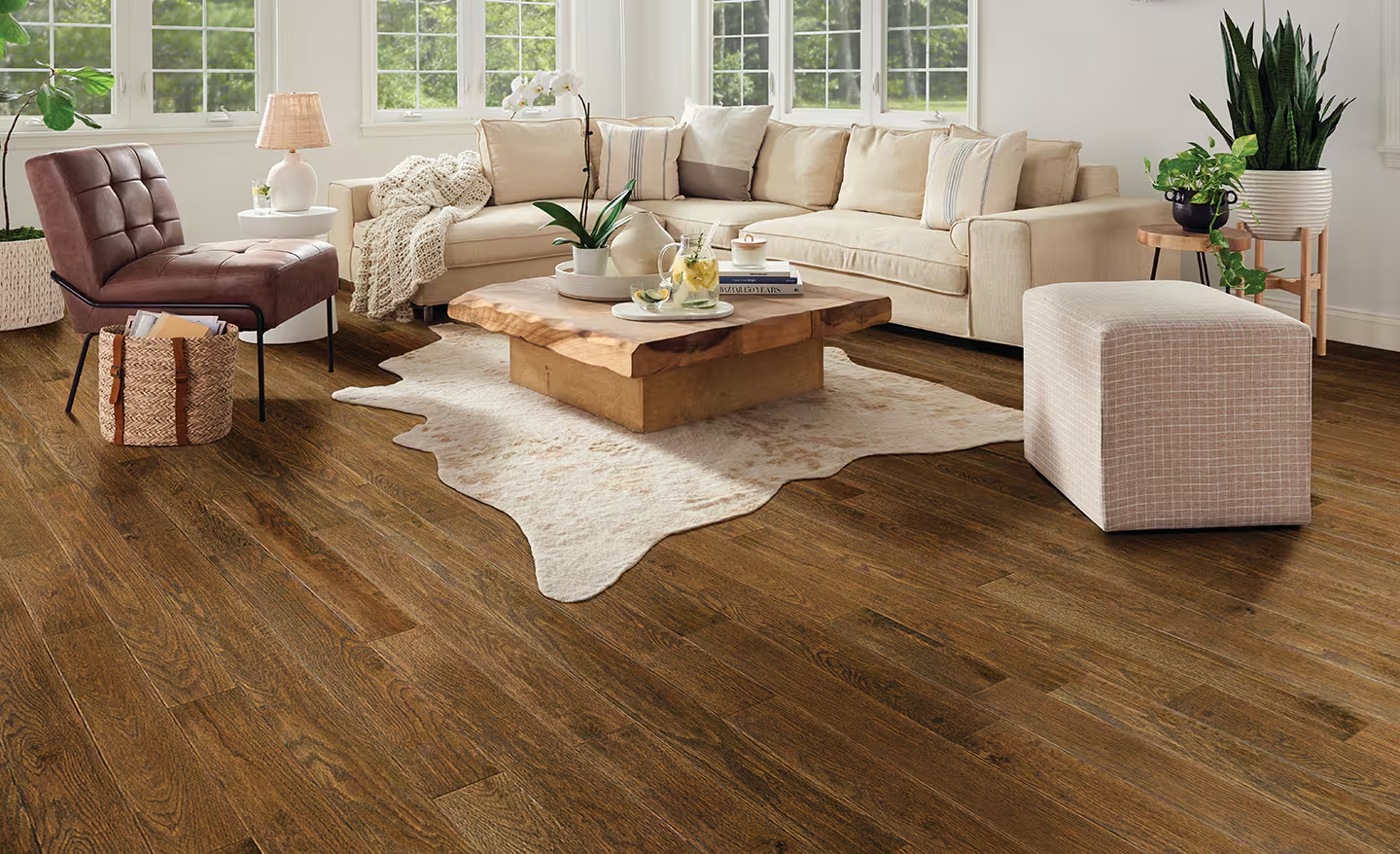Eco-Friendly Flooring Options That Look Stunning

In almost any style of home, with any taste you want to achieve, as it turns out, your home can be green, from the floors up. Whether you’re going for a sleek modern aesthetic or a rustic, traditional style, there are plenty of green options. If focusing on your floors specifically, you can choose among handsome, cobblestone-like linoleum (made from linseed oil, cork dust, wood flour and pine resin); natural stone tiles; or colourful cork.
(Bamboo, technically a grass, grows very fast; cork floors are made from the bark of a tree, gathering it off without altering the tree.) VOC-free glues are available for many flooring options.
Reclaimed Hardwood
An eco-friendly option for flooring that has gained in popularity is reclaimed wood, such as barn wood that has a demolition date on the horizon. Formerly used as old-growth wood in barns or buildings that have reached their end-of-life, the aged timbers lend a touch of history to a space, giving it a lived-in and homey look.
The colour of the reclaimed wood depends on your sense of style and colour tones. For example, oak is popular for home remodelling projects in part because it is a hard wood, and thus can endure building pressure without too much swaying and wobbling, as well as because it looks and feels beautiful. Other options are maple, douglas fir, etc.Using old lumber lessens the rate of deforestation. Furthermore, by reusing timbers that have already been cut, we avoid wasting timber which remains in trees owing to draft.
Reclaimed designWorks is your source for reclaimed wood floors to suit any decorating scheme – from Alpine blends to coastal collages and every decor in between. Our wide plank reclaimed floors come in a myriad of colours and textures – some with charcoal distress marks or sawmill marks to give a rustic look and feel.
Engineered Hardwood
It shares the design versatility of solid wood floors by virtue of being able to be produced in exotic species, with specialty textures and surface treatments, as well as being able to be milled in wider plank-widths than are typical of solid wood floors. Its moisture-management qualities allow it to be installed where solid wood could not be, by virtue of its sensitivity to moisture fluctuations.
Engineered flooring consists of a real wood veneer that is bonded to several layers of plywood to give it added stability and consistency. Engineered floors are less likely to shift or move from changes in temperature or humidity, making them an ideal choice for use in homes as well as in stores.
If you buy engineered hardwoods, make sure that they contain ‘low-VOC’ certification, so they’ll give off fewer volatile organic compounds both during manufacture and installation, and later on because of fading, squeaking or other chemical off-gassing problems. Seek out floors that contain sustainably harvested wood from Forest Stewardship Council-certified forests.
Concrete
Home renovation can involve many changes, but one of the most significant is likely to be the floor: if you’re adding on, redoing or starting completely from scratch. In either case, given our participation in a climate emergency as well as economic recession, it’s incumbent on us to give due consideration to the impact of our decisions – not just on ourselves, but on the planet.
Although concrete floors might seem more suitable for industrial settings than residential areas, they are one of the greenest flooring options in the marketplace. Made from reprocessed materials and other byproducts of waste instead of felled trees for manufacturing, concrete floors are an eco-friendly option that come with quite a few green accreditations.
Cork flooring is also an ecological choice, made from a resource that is harvested without damaging the tree and that regrows within nine years or less; a natural insulator against both heat and cold; already fire retardant; and also a natural heat loss, or gain, insulator. Linoleum is another good option, made from natural, sustainable, harvested resources and water-resistant, too, with no volatile organic compounds (VOCs).
Stone
For those building or upgrading their homes, sustainability in floor choices is becoming an important consideration. Selecting luxurious custom options can be every bit as important as reduced environmental impacts – we don’t have to sacrifice elegance at the cost of the planet! There are many options for reduced-environmental-impact flooring available today.
The best bets for going green are cork and bamboo flooring, both coming from fast-growing renewable resources that require a much smaller ecological footprint than acquiring new timber. Other eco-friendly bets are laminates, which feature recycled materials as the core and use non-toxic coating or sealants only on the top layer.
But setting this question aside, it should be noted that sustainably sourced flooring materials are just as durable and lovely, allowing you to make use of them in any room. Granite can withstand busy traffic-heavy rooms, and thanks to its speckled pattern, it can also mask scratches and chips. Limestone, on the other hand, has more subtle aesthetics that can be used to good effect in warm, more private areas such as living rooms and bedrooms. Ultimately, when it comes to flooring materials in general, you should choose the material that’s most appropriate for your space and needs.





